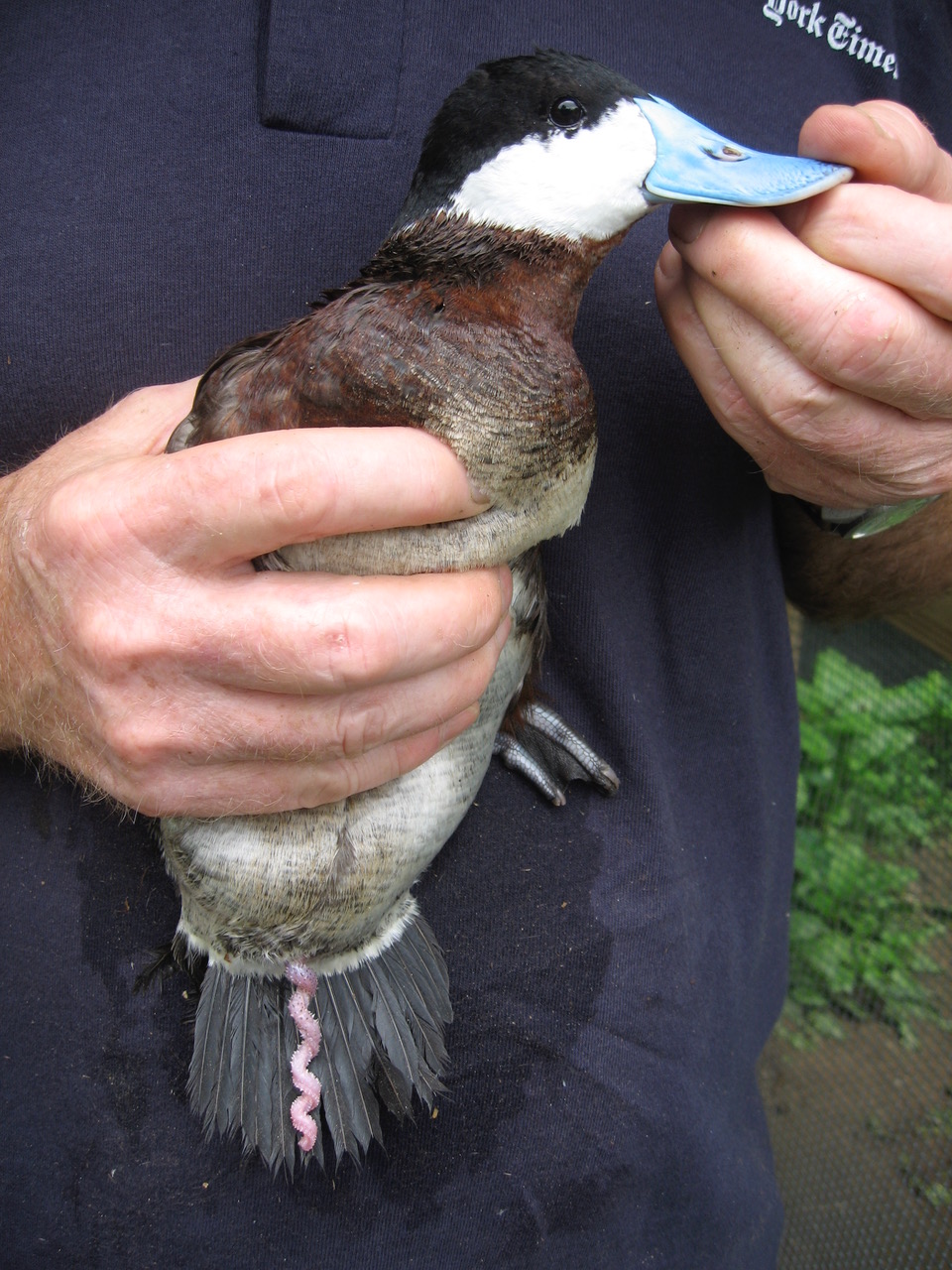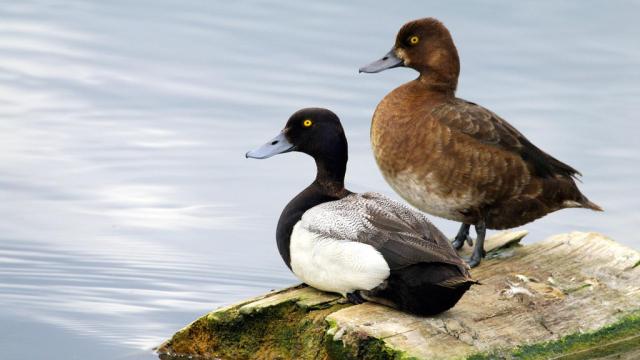A male and female Lesser Scaup. (Image: Kurt Bauschardt/Flickr)
Male ducks have some of the weirdest junk in nature — a ludicrously long, corkscrew-shaped member that evolved on account of an ongoing battle of the sexes. New research shows that the social environment in which the male duck finds himself in has a pronounced effect on the length of his penis, a finding that may finally put the “size matters” debate to rest. For ducks.
When it comes to sex, male and female ducks are locked in an intense sexual conflict that has led to some seriously weird genitals on both sides. Typically, female ducks pair off with a preferred mate during the breeding season, but they also get harassed by guys who don’t take the hint. Scientists estimate that a third of all duck matings are forced, leading to a genital arms in race in which the the twisted configuration of the female reproductive tracts, or oviducts, restore female choice. While the male’s corkscrew-shaped penis twists in a clockwise fashion, the female oviduct twists in the opposite direction. The result is that the majority of forced copulations don’t lead to fertilization.

A male duck shows off his impressive member. (Image: P. Brennan)
Given the extent of this genital arms race, Patricia Brennan, an ornithologist at Mount Holyoke College, hypothesized that intense male-on-male competition may affect the development and shape of a penis over the course of a male duck’s lifetime. And so she conducted an experiment, the results of which now appear in The Auk: Ornithological Advances.
Brennan’s experiment involved two species, the very promiscuous Ruddy Duck and the pair-bonding Lesser Scaup. As would be expected, Ruddy Ducks have long members, whereas Lesser Scaups, as their name unintentionally suggests, do not. The researchers studied captive ducks of both species across two breeding seasons at the Livingston Ripley Waterfowl Conservancy in Litchfield, Connecticut, USA.
During the mating season, male ducks were either kept together with other males (the experimental group) or with a single female (the control group, lucky them). When measuring the male penises afterwards, the researchers found that the Lesser Scaup featured longer penises on average when housed with other males. This implies that Brennan’s hypothesis of “phenotypic plasticity of penis morphology” was correct, but things were a bit more complicated for the Ruddy Duck.

(A) A male Lesser Scaup and (B) his typically short, smooth penis. (C) Ruddy duck males and (D) a characteristically long, corkscrew-shaped penis. (E) A delayed Ruddy Duck penis. (Image: P. L. R. Brennan, I Gereg, M. Goodman et al., 2017)
For Ruddy Ducks, the act of being housed with other males caused some to experience growth and reproductive delays. Many Ruddy Ducks failed to reach sexual maturity until the second year of the experiment (most Ruddy ducks typically reach sexual maturity at two years, but fewer reached maturity at one year than normal). When they finally did, the smaller Ruddy Ducks males housed in male groups grew their penises faster than males housed with a mate — but their dicks grew out of sync with each other, staying in a reproductive condition for only short periods of time.
This “lack of sync,” both in terms of delaying sexual maturity and penis growth, may have something to do with the intense level of male-on-male competition. By offsetting their reproductive potential, the ducks were making the best of a bad situation. They weren’t all becoming sexually competitive for females at the same time, giving the smaller ducks a slight reproductive chance, rather than none at all.
“This is an excellent experimental study of penis morphology, looking at the effects of social environment on penis size in two duck species that have different mating systems,” said Bob Montgomerie of Queen’s University, an expert on reproductive strategies who was not involved in the study.
The study shows that the level of competition between males can have a pronounced effect on their genitals. But in the grand scheme of things, it’s not immediately clear if these enhanced males are any luckier when it comes to reproduction.
“The question now is whether the observed increase in penis size in Lesser Scaup under the threat of sperm competition actually gives males a competitive advantage,” said Montgomerie in a statement. “Like all good studies, this one will undoubtedly stimulate more research, as it provides both methodologies and a clear focus on interesting questions.”
In other words, the mysteries of duck penises live on.
